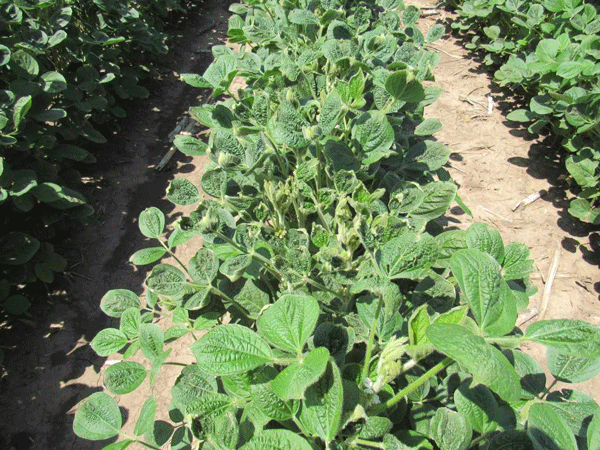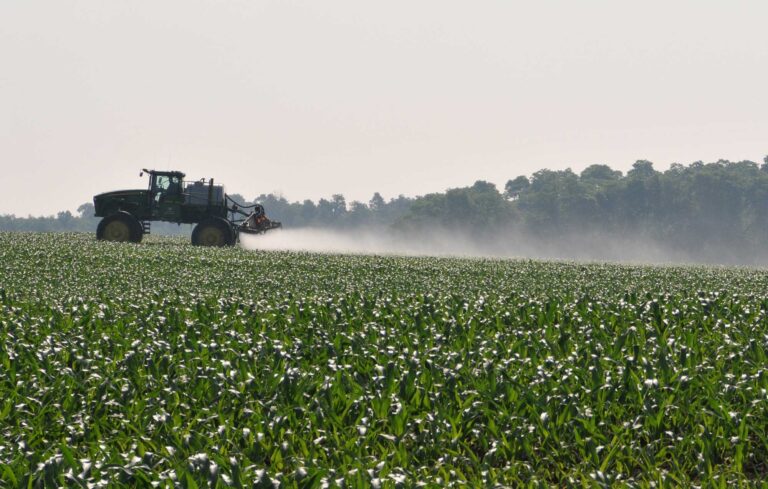For the past week, talk of dicamba has been on the lips of many growers as the U.S. Environmental Protection Agency considers registration for three products. The use of dicamba, a postemergence weedkiller for soybeans and cotton, was put on hold in 2024 over claims about its impact on human and environmental health.
The EPA has opened public comments on this topic, and the comment period ends Aug. 22. Growers, applicators, distributors, retailers, and others with experience and knowledge about dicamba herbicides are encouraged to submit a comment.
After the public comment period closes, the EPA will review the comments received, before issuing a final registration decision for dicamba.
Dicamba products had previously been marketed by Bayer CropScience, BASF, and Syngenta as postemergence products under the brand names XtendiMax, Engenia and Tavium. There were struggles with the products from the beginning, as complaints from growers piled up about dicamba drift impacting neighboring crops. And then last year, a U.S. District Court ruled that the EPA violated public input procedures in its approval of these products, and it vacated the product registrations. As a result, farmers were unable to spray dicamba on crops this growing season.
“We believe the EPA will benefit from hearing from those closest to the technology,” Bayer said in a statement. “This will help to ensure any decisions regarding the registration of these dicamba herbicides are fully informed by those who rely on this important tool. Even a simple comment explaining the important role dicamba plays on a particular farm can be impactful and useful for the EPA.”
Bayer said it is hopeful that growers will have access to dicamba products in time for the 2026 season.

Based on what appears in the current EPA documents, the proposed label mitigations include:
- No federal label cut-off dates for applications in dicamba tolerant crops (though certain crops/products may have growth stage restrictions)
- Volatility mitigations based on temperature, including no application for temperatures forecasted above 95 degrees
- Endangered Species Act runoff mitigation requirements (previously published in 2024 and utilized in recently approved new herbicides) that will be based on points, depending on farming operations
- Product application rates will remain at 0.5 lb dicamba ae per acre, with a maximum of two applications per year, on dicamba-tolerant soybeans and cotton.
- A single downwind drift buffer of 240 feet is required, though this buffer may be reduced by certain mitigations under the herbicide strategy. Do no apply if sensitive crops and/or certain plants are planted on an adjacent downwind field or area.
Bayer is recommending that comments be centered around the importance of OTT dicamba technology to farming operations, including impacts of lack of access to the technology; grower’s experience with OTT dicamba products in past seasons; and how weed pressure impacts yield, profitability, and herbicide resistance management of crops.


:max_bytes(150000):strip_icc()/Cropped-early-season-pigweed-corn-west-ainsworth-ne-copy-0dc5b914e7304af3b49e64f3da3ebe01.png)
:max_bytes(150000):strip_icc()/1-dab4722770f349db9bb2cbd1ed2387f3.jpg)
:max_bytes(150000):strip_icc()/Westhoff-116039112-606e4e2f5e7d4bc7b498d2dd666b1ec3.jpg)



:max_bytes(150000):strip_icc()/54674661965_39811bf683_o-5ad81538c63844cdbfc466e514c497be.jpeg)
:max_bytes(150000):strip_icc()/croppedLee20Lubbers20Wheat20Harvest-15706a7736474a8293d6fdcf8f025f00.jpg)
:max_bytes(150000):strip_icc()/SieversFarmDrone_0-e1760038242952-6c0ea1bb11e04d67adaea50a1bc8d603.png)